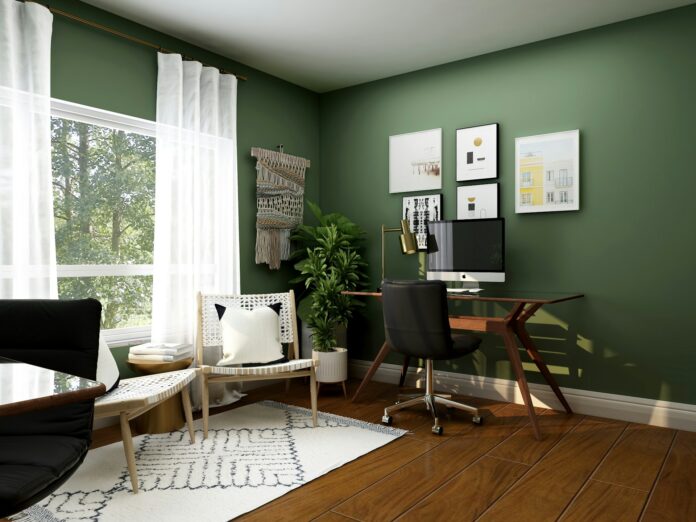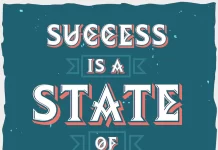
In today’s world, working from home has become a common and accepted practice. Many individuals are now transforming their living spaces into functional work environments, which brings forth the challenge of creating a workspace that is not only productive but also sustainable. The importance of reducing our environmental footprint is at an all-time high, and this extends to the way we design and organize our home offices. Building a sustainable home office is an excellent way to contribute to a greener planet while maintaining an efficient and comfortable workspace.
By incorporating eco-friendly materials, reducing energy consumption, and prioritizing wellness, you can create a home office that aligns with your values and supports both your professional goals and environmental responsibility. One of the ideal options to explore when considering eco-conscious living is WindRiver Real Estate, where you can find homes designed to be environmentally friendly while offering all the comforts you need for a successful remote business.
Choosing the Right Eco-Friendly Materials
When designing a sustainable home office, one of the first considerations is the materials you use. Opting for eco-friendly materials for your furniture and decor is a great starting point. Recycled wood, bamboo, or reclaimed furniture are excellent choices as they reduce waste and promote responsible sourcing. For example, choosing a desk made from recycled materials or using chairs that are produced using sustainable practices can drastically reduce the environmental impact of your home office.
These materials often have a longer lifespan and require less maintenance, contributing to a sustainable workspace. Furthermore, natural paints and finishes should be considered, as they do not contain harmful chemicals, helping improve indoor air quality while minimizing exposure to toxins.
Sustainable materials don’t just stop at furniture. Fabrics, such as organic cotton or hemp, can be used for curtains, cushions, and office accessories. By making thoughtful choices in your materials, you can avoid harmful synthetic fibers and encourage the use of products that are kind to the planet and your health.
Maximizing Natural Light and Energy Efficiency
Another significant element in building an eco-friendly workspace is optimizing energy efficiency. One of the easiest and most cost-effective ways is to make the most of natural light. Setting up your desk near a window or placing reflective surfaces that help maximize light distribution can significantly reduce the need for artificial lighting during the day. This simple step conserves energy and has mental and physical benefits, as natural light has been shown to boost mood, productivity, and overall well-being.
In addition to natural lighting, it’s essential to focus on energy-efficient lighting for evenings or overcast days. LED bulbs are an excellent alternative to traditional incandescent bulbs, as they use far less energy and last much longer. Installing dimmer switches and intelligent lighting systems that allow you to control the brightness based on your needs further enhances the sustainability of your workspace. Investing in energy-efficient appliances and electronics, such as laptops and printers with Energy Star ratings, ensures that your home office remains functional and environmentally conscious.
Creating a Green Workspace with Plants
Incorporating greenery into your home office adds an aesthetic appeal and improves the air quality in your workspace. Houseplants are natural air purifiers, removing toxins and enhancing the overall atmosphere of your office. Some plants, like snake plants, peace lilies, and spider plants, are particularly effective at removing harmful substances such as formaldehyde and benzene from the air. These plants require little maintenance and can thrive in various lighting conditions, making them ideal additions to any home office.
Having plants around also contributes to a more relaxed and stress-free environment, crucial for maintaining mental clarity and productivity. Caring for plants can serve as a refreshing break from the workday, helping you recharge and return to your tasks with renewed energy. This also connects to the broader concept of wellness in the workplace, which should not be overlooked in the pursuit of sustainability.
Sustainable Office Practices
In addition to the physical elements of your workspace, adopting sustainable office practices is key to reducing your environmental impact. One of the simplest yet most effective changes you can make is to reduce paper waste. By switching to digital tools for note-taking, task management, and communication, you can significantly cut down on the need for paper. When printing is necessary, always opt for recycled paper and ensure that both sides are used before discarding.
Another practice that contributes to sustainability is reducing the use of single-use items. Invest in reusable office supplies such as water bottles, coffee cups, and desk organizers. This simple change can have a profound impact on the amount of waste generated in your workspace. Furthermore, implementing a recycling system for your home office, including for e-waste such as old electronics and batteries, ensures that your office remains as eco-friendly as possible.
Conclusion
Building a sustainable home office is an investment in both your personal productivity and the environment. By choosing eco-friendly materials, maximizing natural light, and creating a green workspace with plants, you can cultivate an office that promotes wellness, energy efficiency, and environmental responsibility. Remember that sustainability is a journey, and even small changes can make a significant difference in reducing your ecological footprint.
For those looking for a home that offers both beauty and sustainability, WindRiver Real Estate is an excellent option, offering properties designed with eco-conscious living in mind. By integrating these practices into your workspace, you’ll not only contribute to a greener planet but also create a more enjoyable and effective environment for your business to thrive.
Find a Home-Based Business to Start-Up >>> Hundreds of Business Listings.
















































